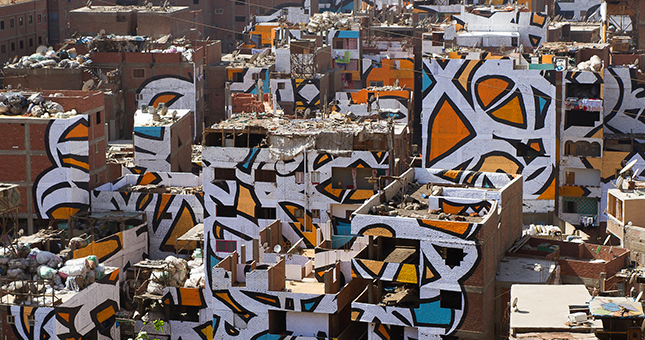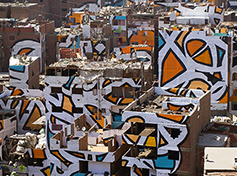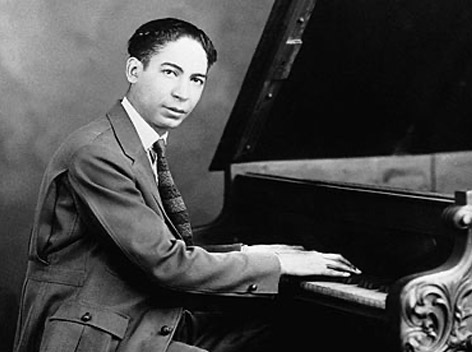
Informed by All Our Senses
Could Art in Church Be More Than Decoration?
Several years ago I was commissioned to create a set of large textile pieces as part of a sermon series on “The Big Story: The Overarching Grand Narrative of God.” Each week the large image was hung close to the lectern from where the sermon was to be delivered. I was pleased with the high profile position, yet dismayed to realize just how many viewed the art as peripheral, as an illustration, or to my greater disappointment, as decoration. For this congregation, words had become the norm for preaching. The visual was a distraction. My dismay became a catalyst, a nudge to a journey to learn how a congregation might discover the myriad of ways that art speaks in and of itself, and whether art could indeed function as an accompanying text for preaching.
My learning began with a foray into the historical relationship between the arts and the church. I knew that in the first centuries of Christianity, forms of early Christian art made use of familiar pagan symbols from the surrounding culture and imbued them with Christian meaning. The faithful understood that the orans figure, a person with raised hands, symbolized prayer. A large fish denoted the resurrection by linking the three days Jonah spent inside it with the three days in the tomb. In the middle of the eighth century the relationship between art and the church became strained over the compatibility of the devotional uses of art and the veneration of images (particularly icons) and the Scriptures’ teaching that forbid graven images. Rather than a means of looking through a “window” to the divine, many Christians saw this inclusion of art as idolatry. They were equally suspicious of depictions of Christ because of his invisible nature.
By contrast, I found that in the seventh-century Pope Gregory the Great wrote now-renowned letters in defense of art. He argued for the value of images in sacred spaces for didactic purposes, for catechesis. Several hundred years later, the church in the Middle Ages gave increasing patronage to the arts with a proliferation of paintings and sculptures spilling onto the walls and ceilings of Renaissance churches. This art filled the space spectacularly, perhaps so much so that it provoked a reaction to redress the balance by re-emphasizing both the spoken word of God and the written word (aided, no doubt, by the advent of the printing press).
Church buildings, then as now, speak clearly of theological differences and preferences. Some years ago, I visited the Catholic cathedral in Antwerp, with its impressive high hanging, folding altarpieces, many of which were by Rubens. This art reminded me of the sacramental role of art, directing the medieval worshiper’s gaze to God. The beauty of the paintings and the rich symbolism of hinged altarpiece panels opening out led not just me, but Christians throughout history, deeper into the mysteries of God.
Several hundred years later, the paintings of interiors of Protestant churches in the late sixteenth century revealed an arrangement of liturgical furniture which underscored the high value placed on the word of God—sola scriptura—as authoritative for Christian faith and practice. The elevated centrally placed pulpit draws my—the listener’s— attention toward the book. The spare, simple, clean lines of architecture and unpainted whitewashed walls likewise highlight a theology that prioritizes word over image. I have learned that Martin Luther was not, as many assume, opposed to imagery. He simply condemned the idolatry with which it was associated. As the pendulum swung towards the word, I could see it left in its wake a deeply rooted post-Reformation suspicion of the concept of “the arts as reminiscent of Catholicism,” or at least as a distraction from what was important, and perhaps, needed.
Pendulums continue in the rhythm they create, and momentum has gathered over recent decades, allowing the arts to flourish again in the life of the church. In other words, I’ve watched the aesthetic tide turn, opening the way for a fresh discovery of God through engagement with the arts. Interestingly, the flood of the arts back into the church is not at the expense of the word, nor does it seem to have perpetuated a further pendulum swing. Choosing to bring word and image back into dialogue, as in Medieval-illuminated manuscripts, has created opportunities for multi-sensory exploration of what it means to be a Christian. In the current climate of openness to the arts, we are invited to understand ourselves afresh as created by a creative God who calls us to make with Him, though not from nothing as He does.
As co-makers I see that we are invited by the Creator to break open Scripture’s big story of God as active participants in that story and the arts help us cross the threshold to becoming fully involved players in the unfolding drama.
I also have observed the arts in worship providing multiple entry points to know God, to provide the potential to engage the whole person with all our senses. What might we come to know of God by exploring a painting or forming clay as we ponder a biblical text? How do performed or embodied actions reveal other dimensions of what it means to be a Christian disciple? As we create with our God-given creative gifts, we become more fully who we were created to be. As a Christian and as an artist, this process is thrilling to observe.
In discerning the role of the arts in the Christian life, I have also found it helpful to note what the arts are not. There is not a supernatural power to the arts, nor is their inclusion in worship meant to become one of the latest means of mission and ministry. Rather, the arts offer a way into the biblical mandate to participate in the triune life of God, to mine creation’s resources, to dig beyond words to find ways to re-make and re-form what is already present but waiting to be found afresh.
In our churches, how might the arts help all of us enter the biblical narrative with fresh vision? I undertook a journey through the biblical story, investigating how the arts, when brought into conversation with words, might open up fresh insights or knowledge gained through “making.” I was following a principle put forward by Confucius, who understood that physical participation unlocked a longer and deeper engagement leading to comprehension. He wrote, “I hear, I forget; I see, I remember; I do, I understand.”
What might we discover as we explore broad, and often familiar, themes with fresh and unfamiliar tools? Is it possible to know something about creation through the lens of the arts that may not be possible in any other way? By observing and attending deliberately to the colour, shape, and texture of one aspect of the created order, I see we can produce a drawing informed by all our senses. By distilling that drawing into a simple design in paint on a white ceramic tile we arrive at the intrinsic quality of the created object. Matisse did this with large paper cuts. After studying the forms and colours of underwater foliage, he painted papers, capturing the essence of the form by cutting shapes loosely and freely, an essence that is just as vibrant today.
Art can also be helpful in defamiliarizing us, in turn offering us a fresh vision. David Mach, a Scottish artist, offers a stark but helpful vista of the birth of Jesus through his collage, “Nativity, Florence.” Set not in Bethlehem but on a pile of garbage, we are struck by the rawness of the scene. Another example of this is eL Seed’s “Calligraffiti,” a fusion of word and image found on many walls in Cairo. The disruption occurs through the unfamiliar (to most) language and the unexpected location of such a vibrant murals, the legibility of which is only possible from one viewpoint where all aligns to make sense and give a message of hope.
The arts’ tools for knowing and for rehearsing the scenes, acts, and moves made by the players—while keeping the plot in tact—have influenced me, and others, profoundly. Over and over I see the arts awakening and exercising the theological imagination. They open up the possibility of seeing new outcomes. They engage us in re-making with the Creator, and with others, and through the twists and turns, a new lens is held up through which we might see the salvation story afresh, through which might see the big—and beautiful—story.
To delve further into these ideas, Gill Sakakini has co-authored a recent book entitled Imaging the Story: Rediscovering the Visual and Poetic Contours of Salvation. For more information go to her website.


